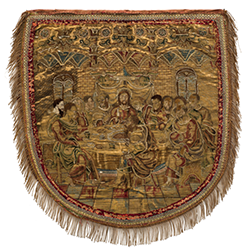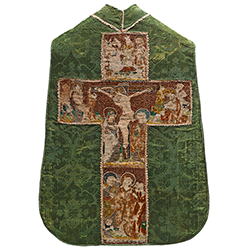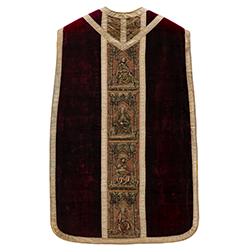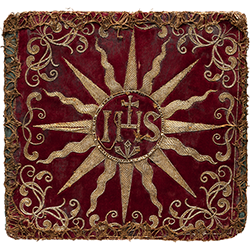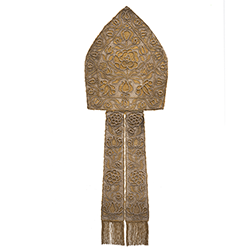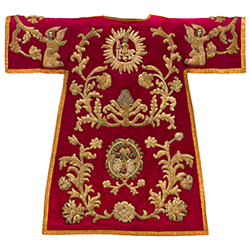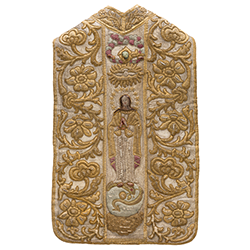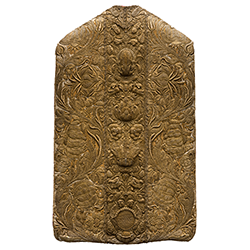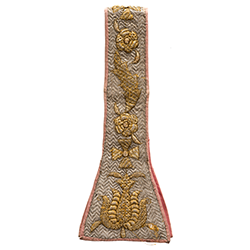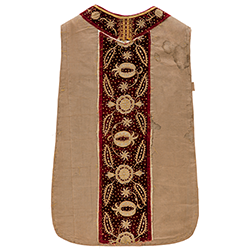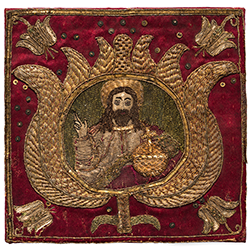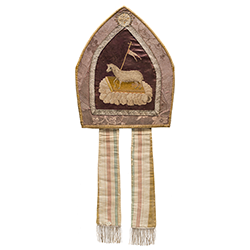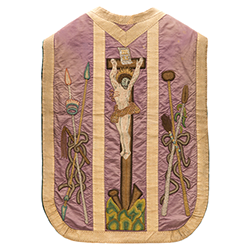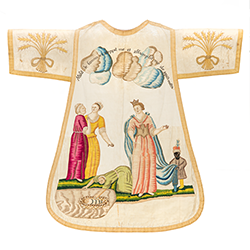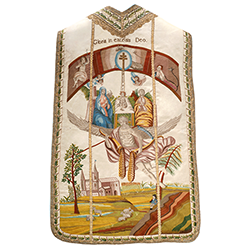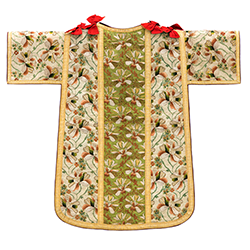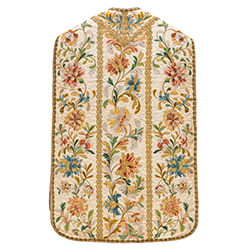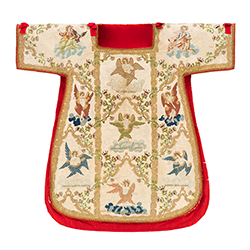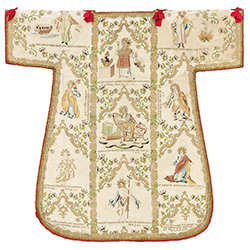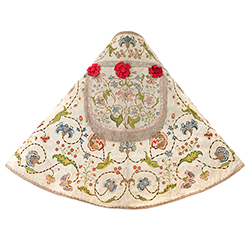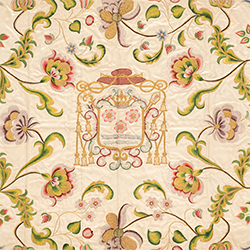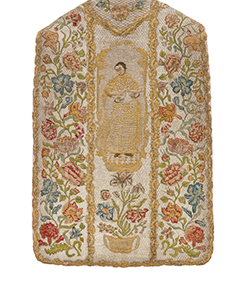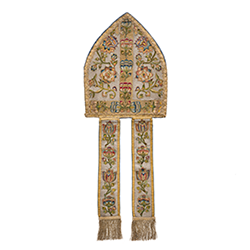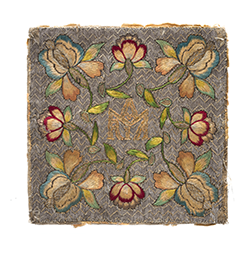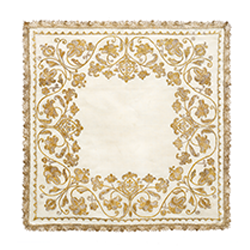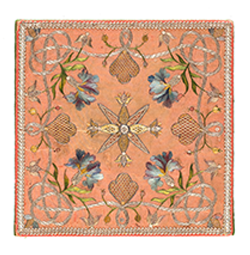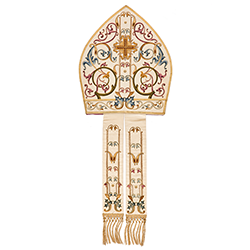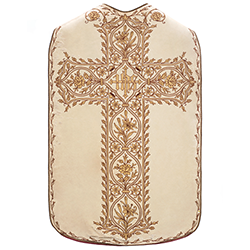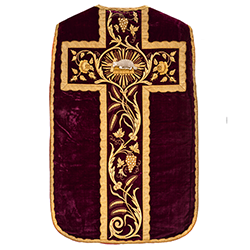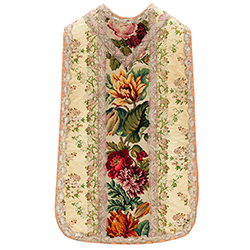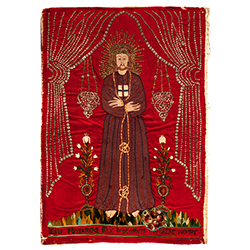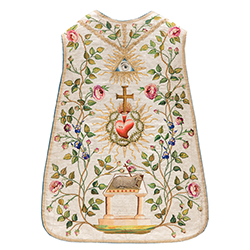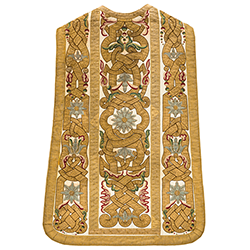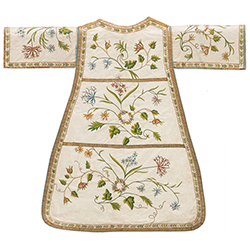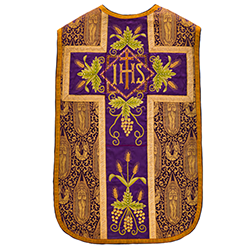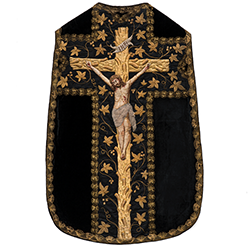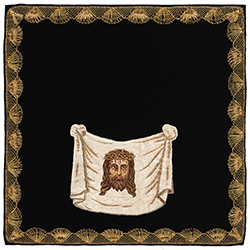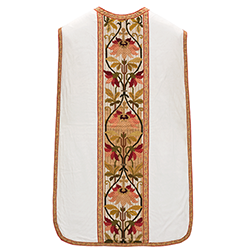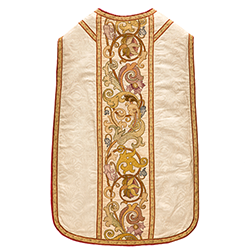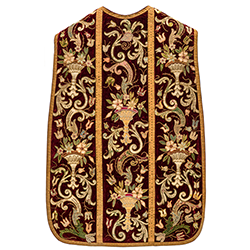15th–16th c. Between the Middle Ages and Renaissance
In the Renaissance period, the or nué technique was developed, and the knowledge of perspective drawing and anatomy began to be applied. In Lithuania, the art of embroidery was strongly influenced by the Flemish and German traditions.
17th c. Golden floral Baroque
However, the greatest change in the decoration of liturgical vestments was the so far unprecedented dominance of floral ornaments. Liturgical vestments turned into magnificent flower gardens almost devoid of religious symbols.
18th c. Rococo colours and ideas of Classicism
The distinctive features of this style are light pastel colours, swirling flower garlands and diagonally meandering “rivers”. In the third quarter of the 18th century, the taste in decorative arts inclined towards classics with a predilection for clear architectural lines and a renewed interest in motifs of classical antiquity.
19th c. Professional versus amateur
The back orphrey of chasubles often acquired the form of a cross. Medallions with Christograms, images of saints or the Lamb of God were placed at the intersection of the cross.
20th c. Tradition or changes
The making and embroidery of liturgical vestments went into decline. Vestments from the Lentvaris church whose patrons were the Tyszkiewiczs, distinguished by high quality and craftsmanship, were an exception.

